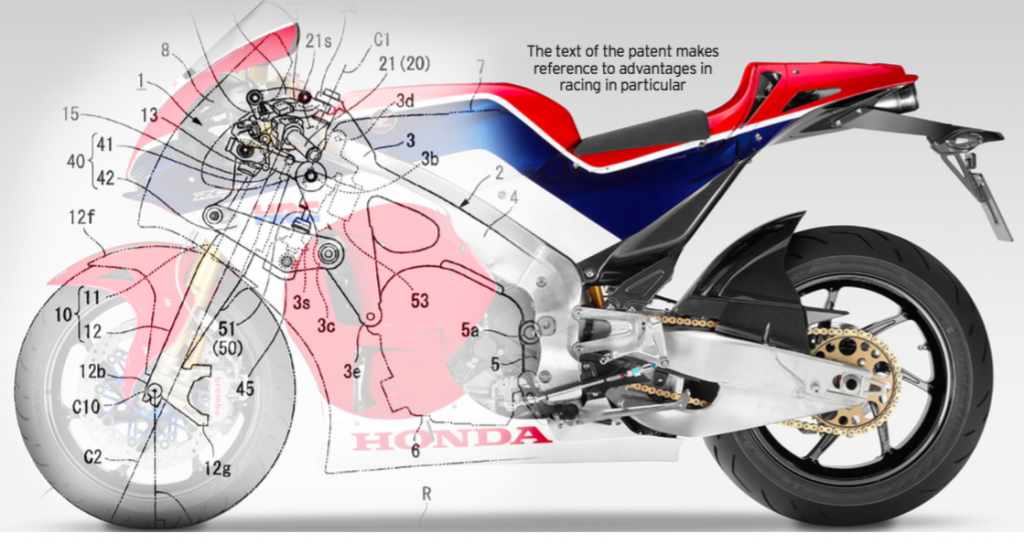THE TELESCOPIC FORK is one of the most enduring elements of motorcycle design, but new patents from Honda suggest that the firm is looking at alternatives.
While telescopics are hard to beat in terms of packaging, cost-effectiveness and handling response, they’re not without their limitations. Especially under braking, they don’t easily brace the mass of the bike against the enormous force generated by modern tyres and brakes. The fork and frame have to be incredibly strong to transmit the forces up from the contact patch of the front tyre to the steering head and back down to the centre of mass.
So far, few alternative approaches have succeeded, but that’s largely down to the overwhelming familiarity of telescopic forks rather than problems with the designs.
Honda is virtually certain to ditch telescopic forks for the next-gen Goldwing. It’s filed patents for alternative set-ups including leading-link designs and Hossack-style forks as used on BMW’s Duolever- equipped bikes. Now the firm has also patented a Hossack- style design aimed squarely at a racebike, namely the RC213V. It makes sense, in a way. The Goldwing puts huge strain on its fork due to its weight, while MotoGP bikes create even crazier forces.
Honda’s new design is largely like a normal Hossack fork, but the front pivot points of the wishbones have been moved forward, ahead of the main fork, to make it more compact overall while allowing the wishbones to be fairly long.
The biggest problem will be overcoming the advantage that decades of development give conventional telescopic forks. Riders find them more familiar, tyres are designed around telescopic-forked bikes, and there’s a goldmine of knowledge to draw upon for set-up. As to whether we ever actually see a system like this on track, that’ll come down to its real-world effectiveness.
How’s it work?
A girder-style fork is attached to the frame via two wishbones, with a single front shock. The lower wishbone allows braking forces to be transmitted more directly between the front wheel and the bike’s centre of mass, so the steering head part of the frame can be lighter.
The design allows more freedom to alter suspension geometry – it’s easy to incorporate anti-dive, for instance. And when the suspension is compressed, the wheelbase won’t necessarily shorten. Clearances between the front wheel and the radiator behind it can be tighter and rear-wheel lift under heavy braking can be mitigated.












